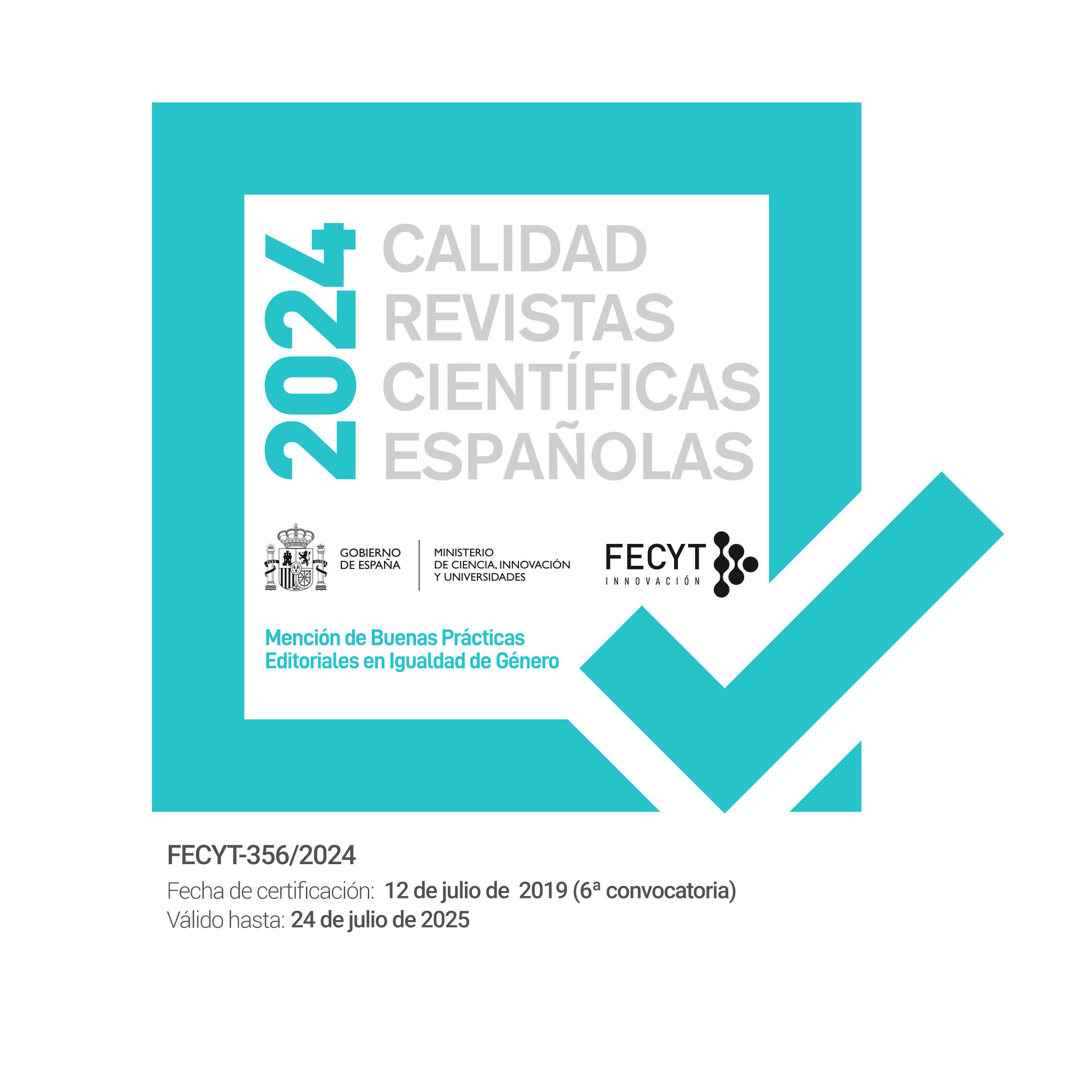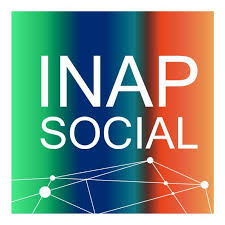Conflictos de valores, límites cognitivos y malas prácticas organizativas como riesgos para la utilidad de los códigos éticos en la Administración pública
DOI:
https://doi.org/10.24965/gapp.11331Palabras clave:
códigos éticos, conflictos de valores, emociones, motivación moral, socializaciónResumen
Objetivos: en un momento en el que miles de códigos éticos empiezan a aprobarse en las Administraciones públicas españolas, este artículo trata de aportar luz sobre sus posibilidades y limitaciones, considerando, especialmente, los retos cognitivos que representan y su inserción en entornos organizativos que, en ocasiones, socializan en malas prácticas a sus empleados. Metodología: se trata de un texto teórico y de reflexión, basado en teoría moral aplicada, centrado en la denominada ética administrativa, al que se aporta investigación reciente sobre ciencia cognitiva. Resultados: el texto resalta el destacado papel de la motivación moral y la construcción del carácter para el éxito de los códigos, pero también nos permite comprender los problemas que se derivan de los conflictos de valores en el servicio público y cómo afrontarlos. Se demuestra el papel de las emociones, sentimientos e intuiciones en la conformación de las decisiones éticas, así como el riesgo de los sesgos cognitivos en la toma de decisiones frente a problemas morales. Finalmente, se trata el problema de los riesgos de socialización y normalización de prácticas corruptas en las organizaciones. Conclusiones: derivadas de los resultados, se aportan recomendaciones para las personas y organizaciones públicas a la hora de desarrollar y utilizar los códigos.
Descargas
Citas
Aguilera, R. V. y Vadera, A. K. (2008). The Dark Side of Authority: Antecedents, Mechanisms, and Outcomes of Organizational Corruption. Journal of Business Ethics, (77), 431-449. https://doi.org/10.1007/s10551-007-9358-8
Alicke, M. D. y Govorun, O. (2005). The better-than-average effect. En M. D. Alicke, D. A. Dunning y J. Krueger (eds.), The self in social judgment (pp. 85-106). Psychology Press.
Andres, T. (2000). Dictionary of values. Giraffe Books.
Arellano Gault, D. (2017). Corruption as an organizational process: Understanding the logic of the denormalization of corruption. Contaduría y Administración, 62(3), 827-842. https://www.elsevier.es/es-revista-contaduria-administracion-87-articulo-corruption-as-an-organizational-process-S0186104217300426
Arendt, H. (1978). The life of the mind [vol 1: Thinking; vol 2: Willing]. Harcourt Brace Jovanovich.
Aristóteles (2001). Ética a Nicómaco [introducción, traducción y notas de José Luis Calvo Martínez]. Alianza Editorial.
Ashforth, B. E. y Anand, V. (2003). The normalization of corruption in organizations. Research in Organizational Behavior, (25), 3-52. https://doi.org/10.1016/S0191-3085(03)25001-2
Baena-García, L. (2022). Los conflictos de interés como riesgos para la integridad: dificultades y recomendaciones para su prevención en el sector público. Revista Vasca de Gestión de Personas y Organizaciones Públicas, (22), 114-129. https://doi.org/10.47623/ivap-rvgp.22.2022.07
Bigelow, J. y Pargetter, R. (2007). Integrity and Autonomy. American Philosophical Quarterly, 44(1), 39-49. https://www.jstor.org/stable/20464353
Boudon, R. (2003). Beyond rational choice theory. Annual Review of Sociology, 29(1), 1-21. https://doi.org/10.1146/annurev.soc.29.010202.100213
Carlsmith, J. M. y Gross, A. E. (1969). Some effects of guilt on compliance. Journal of Personality and Social Psychology, 11(3), 232-239. https://psycnet.apa.org/doi/10.1037/h0027039
Ceva, E. y Ferretti, M. P. (2021). Political Corruption: The Internal Enemy of Public Institutions. Oxford University Press.
Cooper, T. L. (1998). The Responsible Administrator: An Approach to Ethics in the Administrative Role (4.ª ed.). Jossey-Bass Publishers.
Cox, D., La Caze, M. y Levine, M. (2021). Integrity. En E. N. Zalta (ed.), The Stanford Encyclopedia of Philosophy (Fall 2021 Edition). https://plato.stanford.edu/archives/fall2021/entries/integrity/
Dahlström, C., Lapuente, V. y Teorell, J. (2012). The Merit of Meritocratization: Politics, Bureaucracy, and the Institutional Deterrents of Corruption. Political Research Quarterly, 65(3), 656-668. https://doi.org/10.1177/1065912911408109
Dahlström, C. y Lapuente, V. (2017). Organizing Leviathan. Cambridge University Press.
Damasio, A. (2005). En busca de Spinoza: neurobiología de la emoción y los sentimientos. Crítica.
De Graaf, G., Huberts, L., y Strüwer, T. (2017). Integrity Violations and Corruption in Western Public Governance: Empirical Evidence and Reflection from the Netherlands. Public Integrity, 20(2), 131-149. https://doi.org/10.1080/10999922.2017.1350796
De Waal, F. (2014). El bonobo y los diez mandamientos: en busca de la ética entre los primates. Tusquets Editores.
Dunleavy, P., Margetts, H., Bastow, S. y Tinkler, J. (2006). New public management is dead. Long live digital-era governance. Journal of Public Administration Research and Theory, 16(3), 467-494. https://doi.org/10.1093/jopart/mui057
Fishbein, M. y Ajzen, I. (1975). Belief, Attitude, Intention and Behaviour: An Introduction to Theory and Research. Addison-Wesley.
Freeland, C. (2022). Virtue ethics. En Implementing the United Nations Education for Justice (E4J) initiative in your university. OpenLearn Create, Education for Justice, Open University and United Nations. https://www.open.edu/openlearncreate/mod/page/view.php?id=150335
Fukuyama, F. (2014). Political Order and Political Decay: From the Industrial Revolution to the Globalization of Democracy. MacMillan Publishers.
Gelbrich, K., Stedham, Y. y Gäthke, D. (2016). Cultural Discrepancy and National Corruption: Investigating the Difference between Cultural Values and Practices and Its Relationship to Corrupt Behavior. Business Ethics Quarterly, 26(2), 201-225. https://doi.org/10.1017/beq.2016.29
Gilman, S. C. (2005). Ethics Codes and Codes of Conduct as Tools for Promoting an Ethical and Professional Public Service: Comparative Successes and Lessons. PREM y Banco Mundial. https://www.oecd.org/mena/governance/35521418.pdf
Gilovich, T. y Savitsky, K. (1999). The spotlight effect and the illusion of transparency: Egocentric assessments of how we are seen by others. Current Directions in Psychological Science, 8(6), 165-168. https://doi.org/10.1111/1467-8721.00039
Gomá, J. (2014). Ejemplaridad pública. Taurus.
Gortner, H. F. (2001). Values and ethics. En T. L. Cooper (ed.), Handbook of Administrative Ethics (pp. 509-528). Marcel Dekker.
Haidt, J. (2012). The Righteous Mind: Why Good People are Divided by Politics and Religion. Pantheon.
Haidt, J. (2021). The Happiness Hypothesis: Ten Ways to Find Happiness and Meaning in Life. Random House Business.
Hauser, C. (2019). Fighting Against Corruption: Does Anti-corruption Training Make Any Difference? Journal of Business Ethics, (159), 281-299. https://doi.org/10.1007/s10551-018-3808-3
Hauser, C., Simonyan, A. y Werner, A. (2021). Condoning Corrupt Behavior at Work: What Roles do Machiavellianism, on-the-Job Experience, and Neutralization Play? Business and Society, 60(6), 1-39. https://doi.org/10.1177/0007650319898474
Hewstone, M. (1990). The «ultimate attribution error»? A review of the literature on intergroup causal attribution. European Journal of Social Psychology, 20(4), 311-335. https://doi.org/10.1002/ejsp.2420200404
Howlett, M., Capano, G. y Ramesh, M. (2018). Designing for robustness: surprise, agility and improvisation in policy design. Policy and Society, 37(4), 405-421. https://doi.org/10.1080/14494035.2018.1504488
Huberts, L. (2014). The integrity of Governance. Palgrave Macmillan.
Hume, D. (2005). Tratado de la naturaleza humana (4.ª ed.). Tecnos.
Hursthouse, R. (1999). On Virtue Ethics. Oxford University Press.
Hursthouse, R. y Pettigrove, G. (2016). Virtue ethics. En E. N. Zalta (ed.), The Stanford Encyclopedia of Philosophy (Spring 2017 Edition). Metaphysics Research Lab, Stanford University. https://plato.stanford.edu/archives/spr2017/entries/ethics-virtue/
Kahneman, D. (2011). Thinking, fast and slow. Straus and Giroux Farrar.
Keysar, B. (1994). The illusory transparency of intention: Linguistic perspective taking in text. Cognitive Psychology, 26(2), 165-208. https://doi.org/10.1006/cogp.1994.1006
Kirby, N. (2018). An «institution-first» conception of public integrity [documento de trabajo para discusión en el Building Integrity Workshop]. Blavatnik School of Government, University of Oxford. https://www.bsg.ox.ac.uk/research/publications/institution-first-conception-public-integrity
Klamer, A. (2003). A pragmatic view on values in economics. Journal of Economic Methodology, 10(2), 191-212. https://doi.org/10.1080/1350178032000071075
Kohlberg, L. y Candee, D. (1984). The relationship of moral judgment to moral action. En W. M. Kurtines y J. L. Gewirtz (eds.), Morality, moral behavior, and moral development (pp. 52-73). John Wiley and Sons.
Lewis, C. W. (2005). The Ethics Challenge in Public Service: A Problem-Solving Guide. John Willey and Sons.
Lippa, R. A. (1994). Introduction to Social Psychology (2.ª ed.). Brooks/Cole.
Liu, X. X., Christopolous, G. I. y Hong, Y. (2017). Beyond Black and White: Three Decisions Frames of Bribery. En P. M. Nichols y D. C. Robertson (eds.), Thinking about Bribery: Neuroscience, Moral Cognition and the Psychology of Bribery (pp. 123-155). Cambridge University Press.
Maass, A., Salvi, D., Arcuri, L. y Semin, G. R. (1989). Language use in intergroup contexts: The linguistic intergroup bias. Journal of Personality and Social Psychology, 57(6), 981-993. https://doi.org/10.1037//0022-3514.57.6.981
Martin, K. D., Johnson, J. L. y Cullen, J. B. (2009). Organizational Change, Normative Control Deinstitutionalization, and Corruption. Business Ethics Quarterly, 19(1), 105-130. https://doi.org/10.5840/beq20091915
May, J. (2014). On the very concept of free will. Synthese, (191), 2849-2866. https://doi.org/10.1007/s11229-014-0426-1
May, J. y Holton, R. (2012). What in the world is weakness of will? Philosophical Studies, (157), 341-360. https://doi.org/10.1007/s11098-010-9651-8
Mhartín y Guix, E. (2007). Manual del empleado [reproducción de la 9.ª edición de 1905]. Ministerio de Administraciones Públicas.
Milgram, S. (2005). Obedience to Authority: An Experimental View. Pinter and Martin Ltd.
Mullen, B. y Riordan, C. A. (1988). Self-serving attributions for performance in naturalistic settings: A meta-analytic review. Journal of Applied Social Psychology, 18(1), 3-22. https://doi.org/10.1111/j.1559-1816.1988.tb00001.x
Neo, S., Grimmelikhuijsen, S. y Tummers, L. (2023). Core values for ideal civil servants: Service-oriented, responsive and dedicated. Public Administration Review, 83(4), 838-862. https://doi.org/10.1111/puar.13583
Nickerson, R. S. (1999). How we know –and sometimes misjudge– what others know: Imputing one’s own knowledge to others. Psychological Bulletin, 125(6), 737-759. https://doi.org/10.1037/0033-2909.125.6.737
Oeberst, A. e Imhoff, R. (2023). Toward Parsimony in Bias Research: A Proposed Common Framework of Belief-Consistent Information processing for a Set of Biases. Perspectives on Psychological Science, 18(6), 1464-1487. https://doi.org/10.1177/17456916221148147
Oeberst, A. y Matschke, C. (2017). Word order and world order: Titles of intergroup conflicts may increase ethnocentrism by mentioning the in-group first. Journal of Experimental Psychology: General, 146(5), 672-690. http://doi.org/10.1037/xge0000300
Pinto, J., Leana, C. R. y Pil, F. K. (2008). Corrupt organizations or organizations of corrupt individuals? Two types of organization-level corruption. Academy of Management Review, 33(3), 685-709. https://doi.org/10.5465/amr.2008.32465726
Pronin, E., Lin, D. Y. y Ross, L. (2002). The bias blind spot: Perceptions of bias in self versus others. Personality and Social Psychology Bulletin, 28(3), 369-381. https://doi.org/10.1177/0146167202286008
Rauch, J. E. y Evans, P. (1999). Bureaucracy and Growth: A Cross-National Analysis of the Effects of «Weberian» State Structures on Economic Growth. American Sociological Review, 64(5), 748-765. https://doi.org/10.1177/000312249906400508
Ritz, A., Brewer, G. A. y Neumann, O. (2016). Public Service Motivation: A Systematic Literature Review and Outlook. Public Administration Review, 76(3), 414-426. https://doi.org/10.1111/puar.12505
Robbins, J. M. y Krueger, J. I. (2005). Social projection to ingroups and outgroups: A review and meta-analysis. Personality and Social Psychology Review, 9(1), 32-47. https://doi.org/10.1207/s15327957pspr0901_3
Rothstein, B. y Teorell, J. (2008). What Is Quality of Government? A Theory of Impartial Government Institutions. Governance, 21(2), 165-190. https://doi.org/10.1111/j.1468-0491.2008.00391.x
Singer, P. (1993). Practical Ethics (2.ª ed.). Cambridge University Press.
Treviño, L. K. (1986). Ethical decision-making in organizations: A person-situation interactionist model. Academy of Management Review, 11(3), 601-617. https://doi.org/10.2307/258313
Treviño, L. K., Weaver, G. R., Gibson, D. G. y Toffler, B. L. (1999). Managing ethics and legal compliance: What works and what hurts. California Management Review, 41(2), 131-150. https://doi.org/10.2307/41165990
Vallone, R. P., Ross, L. y Lepper, M. R. (1985). The hostile media phenomenon: Biased perception and perceptions of media bias in coverage of the Beirut massacre. Journal of Personality and Social Psychology, 49(3), 577-585. https://psycnet.apa.org/doi/10.1037/0022-3514.49.3.577
Velasquez, M. G. y Rostankowski, C. (1985). Ethics: Theory and practice. Prentice-Hall.
Villoria, M. (2023). «Non-Corrupt Government»: Less Than Good, More Than Impartial. Social Sciences, 12(12), 682-694. https://doi.org/10.3390/socsci12120682
Villoria, M. (2024). Codes of ethics (codes of conduct). En L. de Sousa y S. Coroado (eds.), Elgar Encyclopedia of Corruption and Society (pp. 32-38). Edward Elgar.
Villoria, M. e Izquierdo, A. (2020). Ética pública y buen gobierno. Valores e instituciones para tiempos de incertidumbre. Tecnos.
Wikström, P. O. H. (2004). Crime as alternative: Towards a cross-level situational action theory of crime causation. En J. McCord (ed.), Beyond empiricism: Institutions and intentions in the study of crime (pp. 1-37). Routledge.
Wikström, P. O. H. (2006). Individuals, settings, and acts of crime: situational mechanisms and the explanation of crime. En P. O. H. Wikström y R. J. Sampson (eds.), The Explanation of Crime: Context, Mechanisms and Development (pp. 61-107). Cambridge University Press.
Zyglidopoulos, S. C. y Fleming, P. J. (2008). Ethical distance in corrupt firms: How do innocent bystanders become guilty perpetrators? Journal of Business Ethics, (78), 265-274. https://doi.org/10.1007/s10551-007-9378-4
Descargas
Publicado
Cómo citar
Número
Sección
Licencia
Derechos de autor 2024 Gestión y Análisis de Políticas Públicas

Esta obra está bajo una licencia internacional Creative Commons Atribución-NoComercial 4.0.












